There’s something undeniably powerful about bringing visionary founders together in one space. We had the privilege of hosting our TBV Brand Founders Summit at The Standard Spa in Miami—a gathering of 16 of our 20 portfolio brands, alongside their executives, for two days of connection, conversation, and collaboration. In an industry as dynamic as beauty, these moments of shared wisdom are invaluable, and this summit was nothing short of inspiring.
We created this summit with one goal in mind: to foster a space where beauty founders could come together, learn from one another, and candidly discuss the realities of building and scaling a brand today.
The beauty industry is evolving at lightning speed, fueled by innovation and creativity. Yet, true growth often stems from strategic partnerships and operational excellence. This was a chance to share insights, celebrate successes, and tackle challenges together.
The giftbag was awesome too :)
Key Takeaways & Lessons Learned
As part of our commitment to giving back to the indie beauty community, we always look for ways to share the insights and lessons from our experiences. While not everyone could be in the room, we wanted to extend some of that magic by sharing our key takeaways:
1. Building a Brand with Exit Potential
During our Kiss & Sell session, we set out to have a candid, unfiltered conversation—the kind you wouldn’t read in a news article, but rather discuss over coffee with a friend who’s been in the trenches.
Our panelists—Divya Gugnani (Wander Beauty, 5Sens), Wende Zomnir (Urban Decay, Caliray), Alina Roytberg (Fresh, The Maker), and Roland Peralta (Nutrafol)—shared firsthand experiences of building their brands, some in an entirely different era of beauty. They reflected on the early challenges they faced and how those struggles helped shape the industry we know today.
Sephora was just starting out, and brands like Fresh and Urban Decay were among the first indies to take a chance on this new retail frontier. The road to success wasn’t as clear-cut, and our panelists shared the perseverance it took to push forward when the industry was still evolving.
Divya Gugnani spoke about the difficult decisions around selling a brand—how she had earlier opportunities but chose to wait. One of the hardest realities of selling to a strategic, other panelists discussed, is that, as a founder, your role shifts. Your brand—your baby—is now in someone else’s hands, and the decisions that once felt deeply personal are suddenly made by a new team. It is an emotional challenge many founders face, and knowing when the time is right to evolve your role and let your baby grow up requires a great degree of self-reflection and self-awareness.
Our panel moderator, Colin Walsh, CEO of Specialty Beauty at P&G, has lived through many exits himself as CEO of Ouai and Deva Curl. Colin’s closing advice reinforced the delicate balance between the head and the heart when it comes to founder decision-making. He emphasized the critical importance as a founder to trust your gut and follow your heart, but also the need to surround yourself with people who think with their head (i.e., your executive team). This balance is what helps navigate the toughest decisions along the founder journey—whether it’s launching, scaling, or ultimately deciding when to sell.
2. Community-Driven Creativity & Scrappy Marketing for Maximum Impact
Lach Hall, a co-founder of Vacation, shared how their brand was built hand-in-hand with their community, turning customers into brand advocates in fun and unexpected ways. From giving out playful digital business cards with quirky company roles to inviting the public to their holiday party, Vacation fosters deep engagement by making people feel like a part of something bigger.
Their marketing philosophy starts with a bold challenge: What if we had a $0 budget? This forces them to think creatively about how to cut through the noise. For example, during F1 in Miami, instead of paying for an expensive activation, they hired a low-cost airplane banner (reminiscent of traditional, iconic Miami Beach banner planes) to fly over the city, creating a buzz that extended far beyond the moment through strategic content amplification.
The key takeaway? Big impact doesn’t require big budgets—just sharp ideas, a scrappy mindset, and a willingness to think outside the box.
3. A Founder’s Authenticity Is Their Greatest Asset
Whether it’s through powerful storytelling, community-driven growth, or knowing when to step back and empower a CEO, the most successful brands are the ones that lean into their uniqueness. But stepping back is often the hardest part of the journey. Founders pour everything into building their brands, making it deeply personal. Recognizing when to let others lead—whether it’s a CEO, a leadership team, or a strategic acquirer—requires immense vulnerability and self-awareness.
The best founders don’t just build great businesses; they build trust. That trust starts with themselves and extends to their teams. Coaching, mentorship, and even therapy can be invaluable tools in helping founders navigate this shift—learning to communicate more openly, develop stronger self-awareness, and let go in a way that ensures their brand thrives without them at the center of every decision.
Dianna Cohen, Founder of Crown Affair, shared her personal journey highlighting how she and her now-CEO, Elaine Choi, worked through this transition together. As Dianna pointed out, “this is ongoing work. Leadership isn’t just about vision—it’s about knowing when to step in and when to step back.”
The strongest teams succeed because they’re built on a foundation of trust, communication, and clarity—all of which start at the top. Founders who embrace this mindset are the ones whose brands are best positioned for long-term, sustainable success.
4. Navigating Challenges With Resilience
Every founder faces moments of doubt, crisis, and unexpected hurdles, but the true test is in how they respond. We heard firsthand from Drew Todd, Co-Founder and CEO of Feals, how setbacks can be transformed into catalysts for growth and how the hardest moments often shape the strongest leaders. The key takeaway? Resilience is just as important as innovation. But resilience isn’t just about pushing through—it’s about having a clear framework to turn a crisis into an opportunity for long-term success.
When faced with a crisis, founders must navigate three key stages: Survive, Stabilize, and Scale.
Survive – The first step is making the tough, often painful decisions to keep the business afloat. This may mean reducing team size, cutting burn, and stripping the business down to its core essentials. Survival requires focusing on what truly matters—your most profitable products, your most valuable customers, and the absolute must-haves to keep operations running.
Stabilize – Once immediate survival is secured, the focus shifts to deeply understanding the business. At this stage, measurement is everything—because you can’t manage what you can’t measure. Founders must track every metric, assess unit economics, and ensure that every dollar spent is working efficiently. Sales without profitability is a dangerous trap, and profitable growth must be the priority.
Scale – With a stable and profitable foundation, the business is now positioned to grow in a way that is sustainable and strategic. Scaling is not just about pushing for more sales—it’s about scaling what already works. Founders who deeply understand their numbers and have built a model that generates cash can now invest in growth with confidence, knowing they are not just growing for the sake of it but in a way that fuels long-term success.
Resilient founders don’t just weather the storm; they use it to become stronger, sharper, and more disciplined operators. The hardest times demand difficult decisions, but they also provide clarity—forcing founders to focus on what truly matters. Those who embrace this process emerge not just as survivors, but as leaders who are equipped to scale in a smarter, more sustainable way.
5. Leadership Isn’t Just About Vision; It’s About Communication
We explored the nuances of having difficult conversations—whether with teams, investors, or partners. The ability to navigate challenges with clarity and confidence can be the difference between a company that thrives and one that stagnates. One framework that resonated deeply in this discussion was Neuberg Gore’s concept of CUBE, a structured approach to improving communication and handling tough conversations with intention and effectiveness.
CUBE is a structured framework that helps leaders navigate difficult conversations with clarity and purpose. It stands for:
Create Context & Objectives – Set the stage for the conversation by defining its purpose and desired outcomes.
Understand Each Other’s Worlds — Theirs First – Prioritize active listening and empathy to fully grasp the other person’s perspective before sharing your own.
Brainstorm Options – Explore potential solutions together, fostering collaboration rather than conflict.
End With Commitments – Conclude with clear next steps, ensuring alignment and accountability.
At its core, CUBE emphasizes four essential elements of effective leadership communication:
Curiosity – Approaching conversations with an open mind, asking questions rather than making assumptions.
Understanding – Deeply listening and acknowledging different perspectives to make all parties feel heard and valued.
Boundaries – Setting clear expectations and limits to ensure discussions lead to constructive outcomes.
Execution – Turning words into action by defining next steps and following through.
By applying CUBE, leaders can foster trust, alignment, and meaningful progress in even the most challenging discussions.
We didn’t just talk about this in theory—we incorporated CUBE into practice, recognizing that these types of conversations arise constantly in business and leadership. Whether managing a team, negotiating with investors, or making strategic decisions with partners, the ability to communicate effectively is critical. By applying this framework, founders and leaders can transform difficult conversations from sources of friction into opportunities for alignment, progress, and stronger relationships.
The Power of True Partnership
One of the most meaningful parts of the summit was our Closed Session, where we engaged in an open, honest dialogue about what’s working, what’s not, and how we can better support our brands. These candid conversations reinforced something fundamental: at True Beauty Ventures, we don’t just invest—we partner.
Our commitment goes beyond capital; we build long-term relationships founded on trust, transparency, and a shared vision for success.
So what makes a successful partnership? Over the years, we’ve found that the strongest relationships between investors and founders share a few key principles:
Active, open, and honest communication. Find us on email, Slack, text, or social—we are always here. Keeping the lines of communication open ensures we can be the best partners possible.
Share the bad news first. The only problem we can’t help solve is the one we don’t know about. Transparency is key—bringing challenges to the table early allows us to work together on solutions.
Measure what matters. You can’t manage what you can’t measure. Data and metrics should be your guiding light in decision-making—understanding your numbers is what drives strategic growth.
Protect the brand. At the end of the day, your brand is your most valuable asset. Building and safeguarding brand equity is what leads to long-term success and strong exit opportunities.
Prioritize what’s most important. The phrase “first things first” exists for a reason. Focus and prioritization are critical—founders who execute with discipline on the most important levers of the business are the ones who win.
Fail fast, learn faster. Failure is inevitable. What separates great founders is how they use failure as a tool for learning, iteration, and growth.
Growth at all costs will end up costing you. We’ve seen it time and again—companies that focus on sustainable, profitable growth early are the ones that don’t have to course-correct later. A solid foundation trumps hyper-growth that isn’t built to last.
This session was a reminder of why we do what we do. At TBV, we are committed to showing up for our founders in meaningful ways, supporting them through every challenge and milestone—not just as investors, but as true partners in the journey.
Looking Ahead
As we reflect on our time together in Miami, one thing is clear: the future of beauty is bright, and it’s being shaped by passionate, fearless founders who are redefining what’s possible. We left the summit feeling more energized than ever about what’s ahead.
To our incredible brands: thank you for your candor, your ambition, and your willingness to push boundaries. This is just the beginning, and we can’t wait to see where the journey takes us next.
Here’s to building, evolving, and thriving—together as the TBV family.
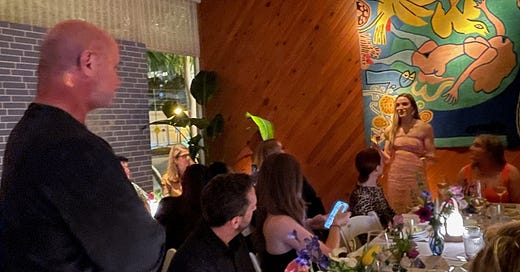




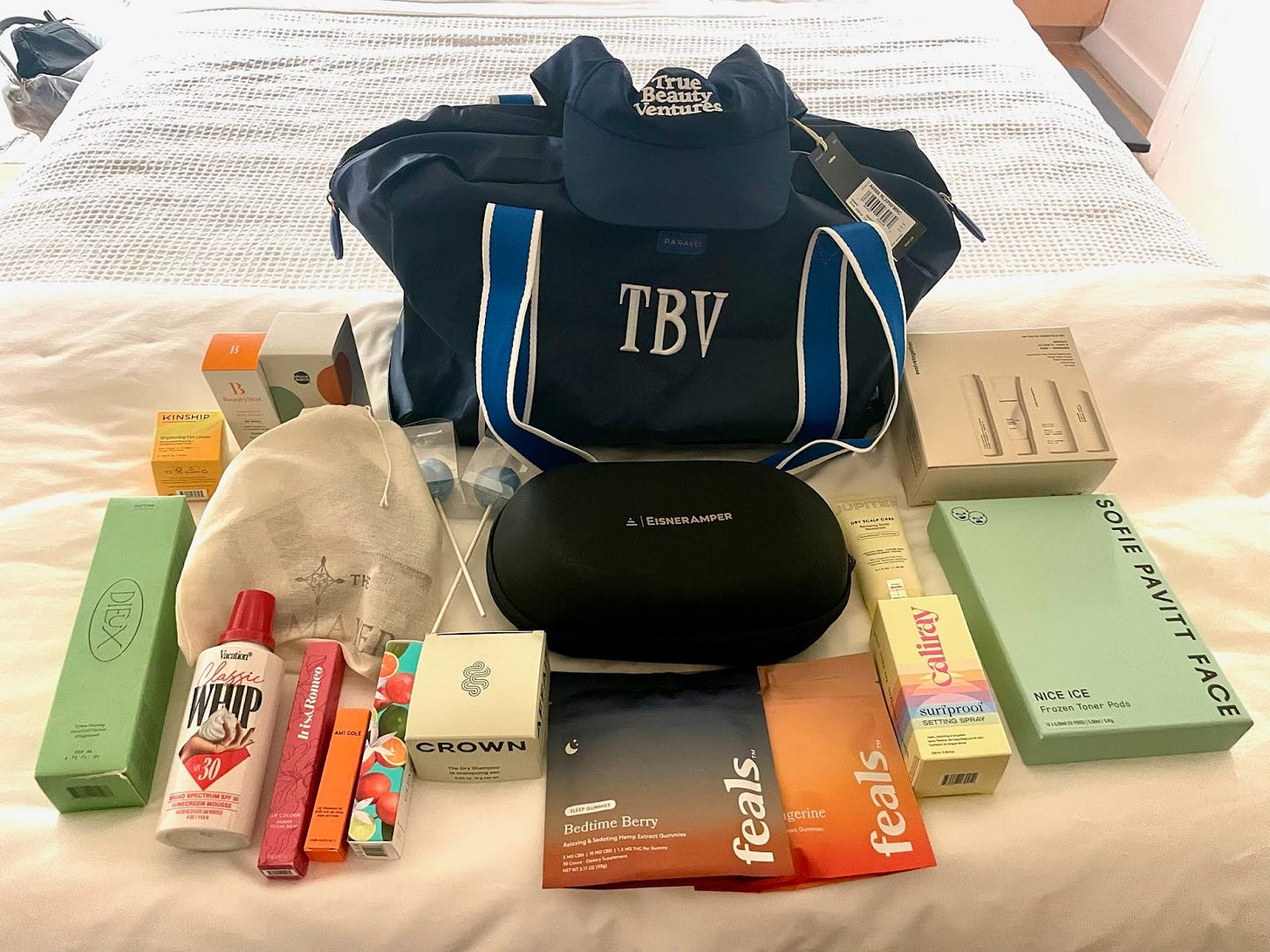
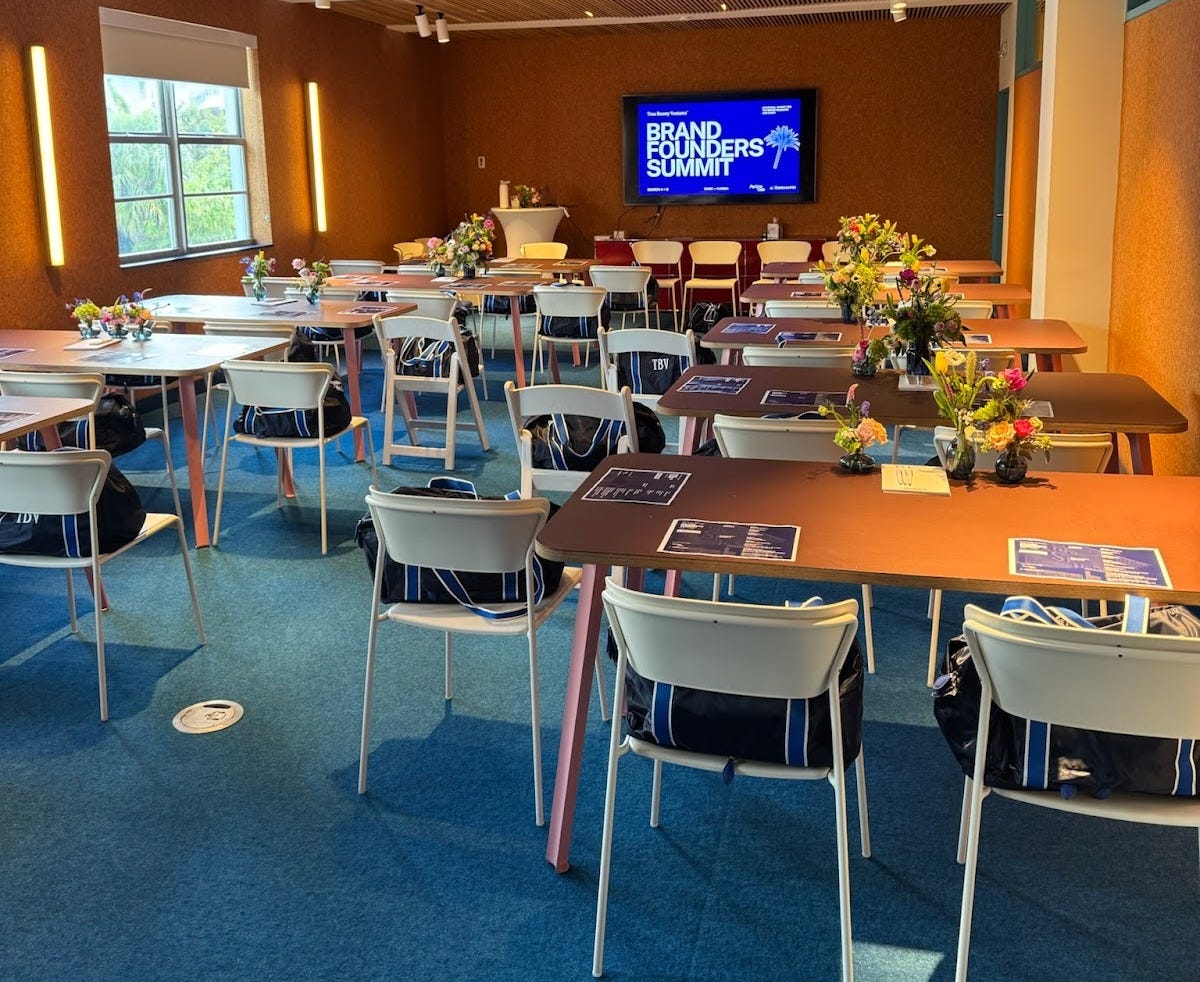
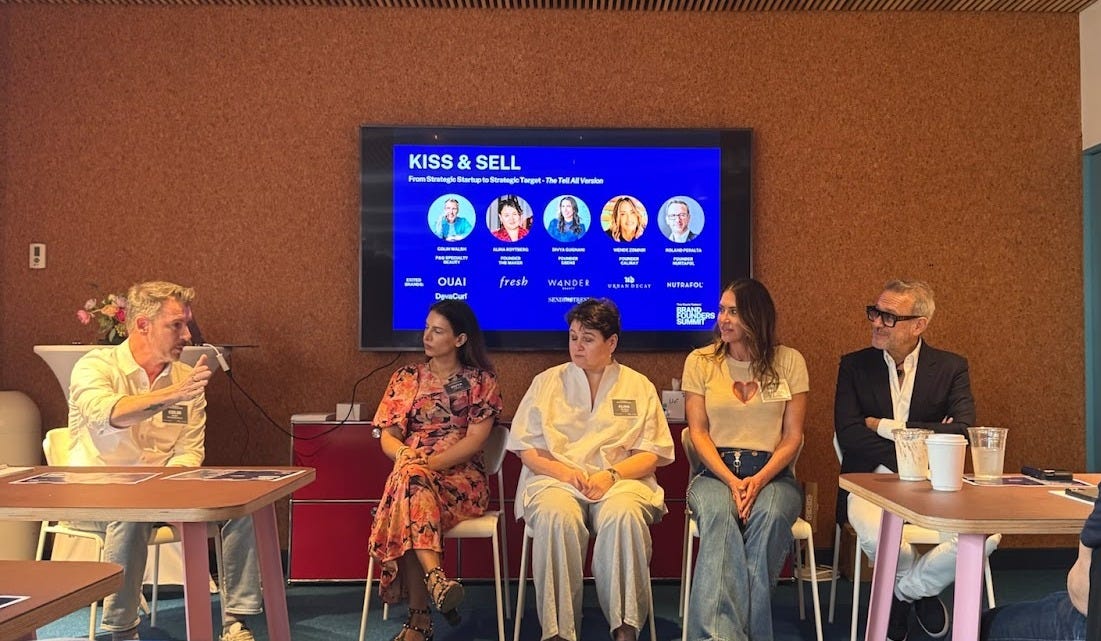
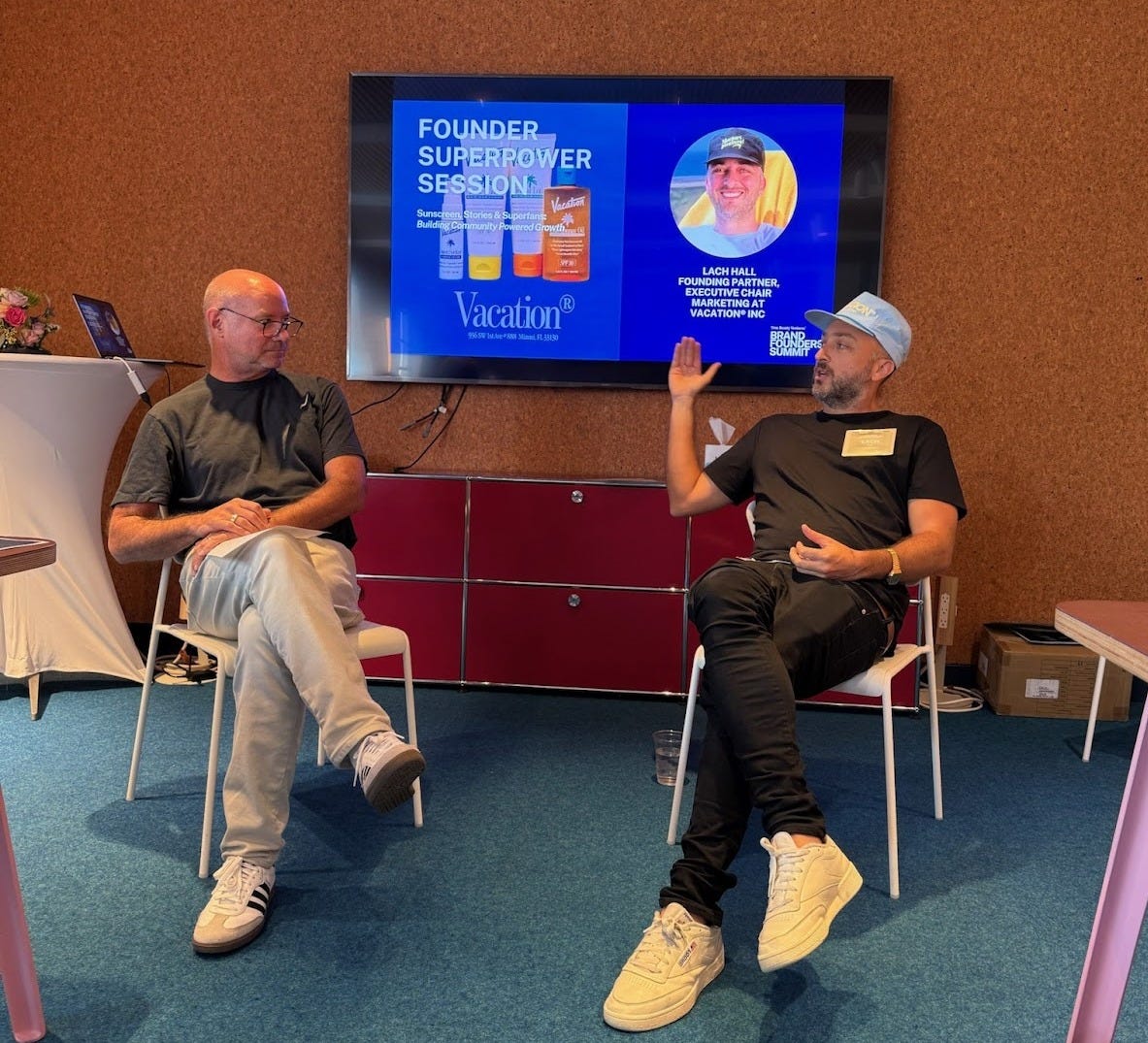


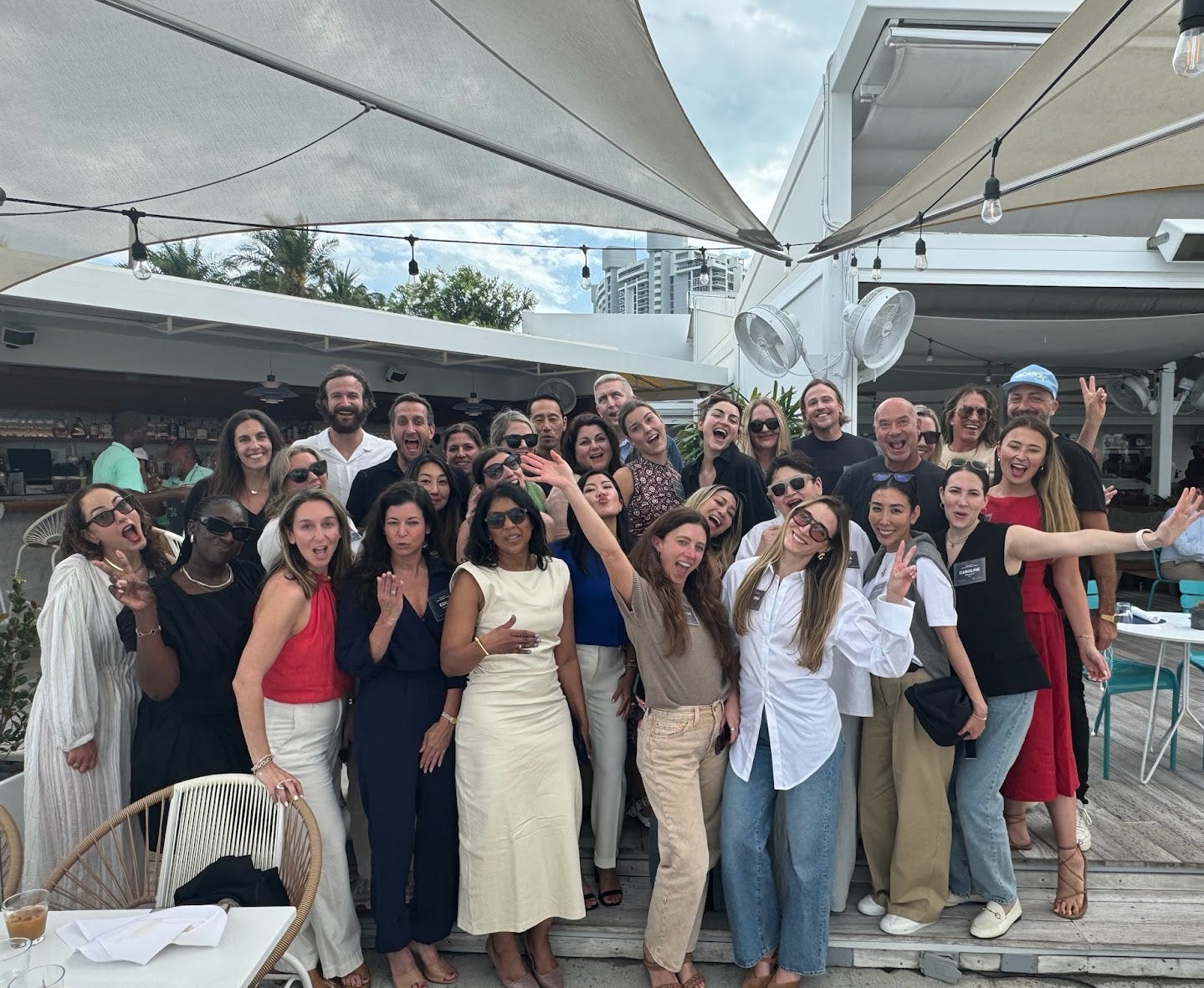

Hi Cristina,
Congratulations on the Substack! I am excited to read it. It's been a while since we connected via Robin at Case Agency but I have been following your progress and watching your portfolio grow - congrats! Bina